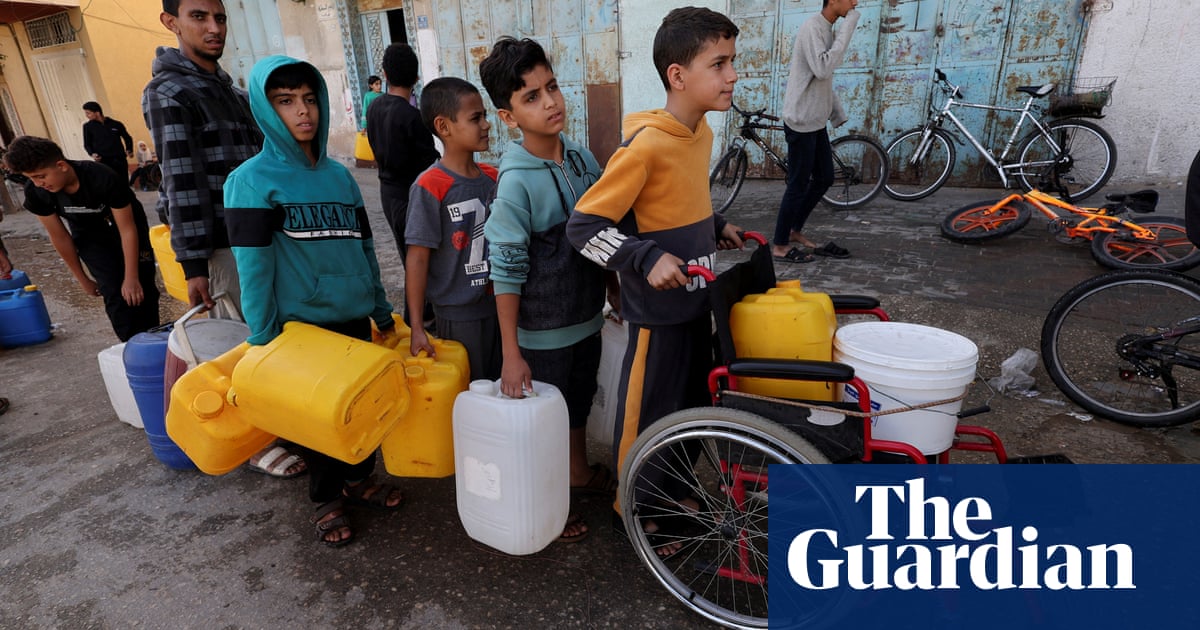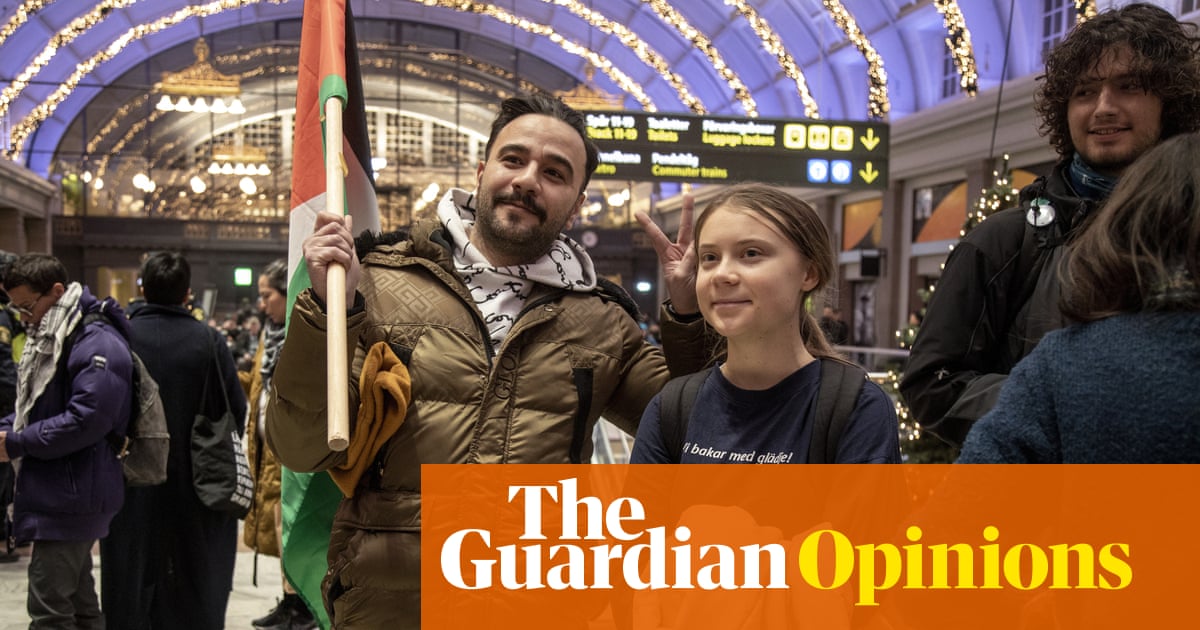
Health services in Gaza are “decimated”, with medical staff exhausted after three months of war forced to extract shrapnel without adequate pain relief, conduct amputations without anaesthetics and watch children die of cancers because of a lack of facilities and medicine.
Dozens of interviews with doctors and medical administrators in Gaza reveal a catastrophic and deteriorating situation as health services struggle to cope with tens of thousands of casualties of the continuing Israeli offensive in the territory and the effects of the acute humanitarian crisis.
Attention has focused on the direct casualties of Israel’s military offensive in Gaza, but medical specialists are increasingly concerned about indirect victims of the war.
Tens of thousands in Gaza with chronic life-threatening illnesses have gone without treatment for months, and are now “without defences”, their bodies’ weakened by malnutrition, cold and fatigue, doctors say. In one incident described to the Guardian, a child with a brain condition died hours before a UN team arrived with vital medicine.
Cancer specialists told the Guardian they had been unable to treat patients in desperate need, including children with leukaemia or tumours requiring immediate life-saving surgery.
“We have nothing to give them. We cannot operate and we have no drugs at all,” said Dr Subhi Sukeyk, the director general of oncology for Gaza, who is also director general of the Turkish-Palestinian Friendship hospital in Gaza City. The principal oncology department of the hospital was forced to close in early November.
“There are people with cancers that are attacking their liver, bones, lungs. I have to explain their condition to them and that there is nothing we can do. We have leukaemia patients, including lots of children, who have died. They have no defence mechanism, no immune system and in this environment they are very vulnerable.”
Sukeyk said a man had brought his son to him every day for three weeks. The boy has a fast-growing tumour in his throat that will soon block his breathing. “Every day they come and every day I have to say there is nothing we can do. I am a surgeon. I could do this operation without difficulty but we have no facilities. It is terrible,” Sukeyk said.
Of the 36 hospitals in Gaza only 15 remain open, and only three are undamaged.
According to Palestinian health officials, 350,000 people in Gaza have chronic diseases and lack almost all medication. One major concern is psychological illnesses, for which drugs are almost exhausted, along with medicine to treat high blood pressure.
Disease is also spreading fast in the crowded, unsanitary conditions. “Everyone is coughing. The children all have diarrhoea or chest infections and there is a lot of hepatitis A now too,” said Hussein Awda, 37, who has been living with his family in a UN vocational training college west of Khan Younis since his home was destroyed and many relatives killed at the beginning of the war.
Attempts are being made to reopen al-Shifa hospital, Gaza’s largest, which became the centre of a fierce propaganda war last year when Israel was accused of deliberately targeting the site. Israeli officials denied this and said Hamas had built a command complex under the hospital and used its facilities.
The hospital, which the World Health Organization described as “a death zone” after it largely ceased operations following raids and occupation by Israeli troops in November, has restarted basic services.
Dr Marwan Abu Saada, the director of Shifa hospital, said he was hoping to open an ICU next week but that fuel, power and medicine was still in short supply. “The major oxygen generators are destroyed so we are relying on cylinders,” he said.
A major problem is reaching medical care. There is almost no fuel in Gaza as a result of restrictions imposed by Israel, so almost no transport. One UN administrator in Khan Younis said he had looked for a donkey to take his father, who was having a heart attack, to hospital.
In December a doctor in Gaza City was forced to amputate the lower part of his niece’s leg without anaesthetics on a table at home after she was injured when the house was hit by a shell and intense Israeli fire in the area made it too dangerous to try to reach Shifa, normally a six-minute drive away. “Unfortunately, I did not have any other choice. The choice was that I either let the girl die or I try to the best of my abilities,” Hani Bseiso said.
Days-long communications blackouts, some imposed by Israel, also cause serious problems as they prevent those in need from calling ambulances.
Palestinian Red Crescent (PRC) crews head to the sites of airstrikes or shelling when they see or hear them but there are grave concerns for others, such as women going into labour, according to Nibal Farsakh, a spokesperson. There have been multiple reports of women forced to give birth at home or in tents without medical care. Others cannot be reached because of the fighting.
“[The ambulances] cannot go into the Israeli military zones. They will fire on us. There are people whose family members have been injured and they tell us and we can’t get to them. There are people who have dead relatives with them for days because they cannot go outside to bury them in their yard,” said Farsakh.
Farsakh said 14 ambulances had been destroyed and 19 damaged in the fighting over three months, leaving about 24 operational. Eight PRC staff have been killed and 29 injured.
The Israeli offensive in Gaza followed an attack by Hamas in Israel on 7 October that killed 1,200 people, mostly civilians. Since then, nearly 25,000 people have died in Gaza, according to Palestinian health officials, about two-thirds of them women or children. About 60,000 have been injured.
Israel has said it tries to avoid civilian casualties but that Hamas uses the local population as human shields by placing military infrastructure among and below them. Hamas denies this.
Israeli officials have said they do not fire on ambulances transporting civilians but that some have been used by Hamas to move fighters or weapons.
The population of Rafah, on the border with Egypt, has more than quadrupled to 1.3 million, who are served by one small general hospital with about 40 beds, some private clinics and a handful of field hospitals that can only offer very basic care.
“For diagnosis, we only have our clinical judgment. Maybe we can do an X-ray or some ultrasound but nothing more. We have gone back 30, 40 years,” said Sukeyk.
The Israeli government spokesperson Eylon Levy said on Wednesday extra field hospitals were expected to be up and running in the coming days.
In recent weeks, Israel has said it has transitioned to less intensive military operations that will minimise civilian casualties and allow more aid to reach Gaza. However, strikes have intensified in densely populated Rafah and Khan Younis, where it is feared the major Nasser hospital will be forced to close.
“What the parties to the conflict are saying and what we are seeing on the ground is very different. There are continual airstrikes, artillery shelling, tank movements and naval activities. There is a disconnect between rhetoric and reality and we see the humanitarian consequences,” said William Schomburg, the head of the International Committee of the Red Cross (ICRC) in Gaza.
On Thursday, Netanyahu told reporters that Israel was allowing in only the absolute “minimum” aid necessary to prevent a humanitarian crisis.
Earlier this week, Philippe Lazzarini, the head of the United Nations Relief and Works Agency for Palestine Refugees, said only more supplies could reverse the “degrading humanitarian situation in Gaza”.
Leaving the territory is also a problem. Before the war, patients requiring chemotherapy were treated in Israel. Since the outbreak of the conflict, that has been impossible and only a handful have been allowed out of Gaza for treatment in Egypt.
More than 2,000 were diagnosed with cancer each year in Gaza, including 122 children, Palestinian authorities said last week.
Sukeyk said he had written referrals for 2,500 patients but only 300 to 400 had left.
A British doctor described scenes in al-Aqsa hospital in Deir al-Balah, in the centre of Gaza. James Smith, who travelled to Gaza with Medical Aid for Palestinians, an NGO, said that like other medical facilities, the hospital had been transformed into a shelter for thousands of displaced people, who were camped in every available space. The 250-bed facility had 700 patients, each with relatives, including children. Few wanted to leave after treatment, so the emergency department had become an “inpatient ward”.
The crowds and noise made palliative care for the dying very difficult, Smith said. “There was very limited space to optimise pain relief, dignity or comfort. Conditions were very cramped, very loud.”
Many casualties came with crowds of relatives calling for help for their loved ones, but others were alone, especially young children whose entire families had been killed or incapacitated. “There was a six-year-old boy brought in alone wrapped in a blanket. He had major burns to his face and a [very serious] chest wound. Luckily, we found him, otherwise he would have died,” Smith said.
Limited facilities meant a wait of days before operations on burns victims. A shortage of essential supplies resulted in some spending their last hours in excruciating agony.
“A child was brought in with [very deep] burns across her face, trunk and much of limbs. She was still alive somehow and clearly in excruciating pain. What she needed was analgesics [painkillers] but we couldn’t give them,” said Smith, who returned from Gaza two weeks ago. In the end, the girl was intubated and sedated.
Israeli officials said Hamas put Gaza’s most vulnerable citizens in serious danger by cynically using hospitals for terrorist activities. “Specifically, it has been well documented that Hamas uses hospitals and medical centres for its terror activities by building military networks within and beneath hospitals, launching attacks and storing weapons within the confines of hospitals, and using hospital infrastructure and staff for terror activities.”
On Wednesday, Netanyahu vowed the conflict would continue until Israel had achieved its war aims: returning the 130 hostages that Hamas abducted on October 7 who remain in Gaza and “eliminating Hamas and ensuring that Gaza never again constitutes a threat to Israel”.
Sukeyk said he hoped the war would end soon. “Gaza people deserve to live like others and do not deserve to die at any moment, like now.”












